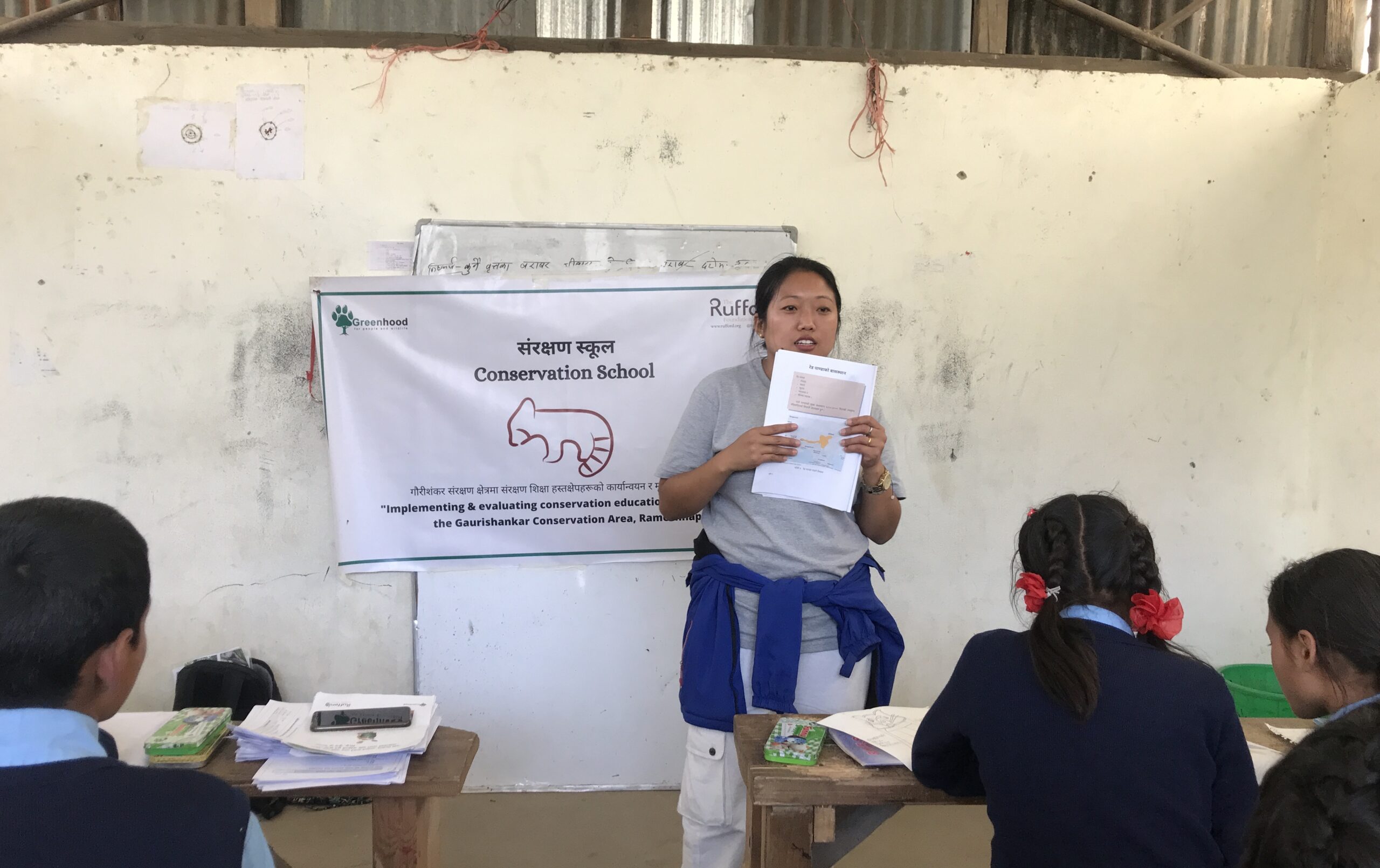
Sabitri Rai
“Have you ever heard of a red panda? Do you know what it looks like? People call it Habre in Nepali.”
Last March, I asked students of grades 6, 7 and 8 of Jatteshwory Secondary School in Garjang (Chuchure). We visited Garjang village, which lies in the scenic river valley of Gokulganga Rural Municipality in Ramechhap.
We were there to explore the effectiveness of conservation education about red pandas through Conservation School. Conservation School is an initiative of Greenhood Nepal to educate school students on their neighbour wildlife, their importance and the role of young people in conservation.
To my question, students began to mumble. Some began to say it looks black and white (referring to the Giant panda), while some disagreed, saying it seems reddish-brown with a beautiful tail. I was amazed to hear their responses. I continued to enquire more about red pandas and realized that students lacked major conservation awareness despite lying close to the Gaurishankar Conservation Area. My preconception of those students knowing more about red pandas was wrong.
This incident clearly showed the status of conservation awareness among students, which was very unclear. It also made me ponder regarding conservation awareness status and challenges in Garjang.
While conservation education is often suggested as one of the best solutions to raise conservation awareness, which is usually implemented, we rarely measure its effectiveness. As I have conducted many awareness programs and public engagements, I’ve always contemplated their effectiveness. Therefore, I planned to measure its effectiveness by implementing the Conservation School series.
We went to six schools at Chuchure and Gumdel village. Met with the students and talked with them about the red panda, its distribution, diet, reproduction habits, conservation challenges, solutions, and opportunities.
When we enquired about the red panda’s diet, a few students promptly answered “nigalo bamboo”. They were right. Red pandas mainly eat bamboo leaves and shoots. An adult red panda eats around 2 kg or roughly 20,000 of bamboo leaves in a day which accounts for 95% of its diet. They also enjoy seasonal fruits and wild berries like Himalayan yellow berries (aiselu). Students were more surprised to learn about the red panda’s specific diet choices.
While discussing conservation challenges, students pointed out that many massive harvesting of nigalo and malingo bamboos could affect the food of the red panda. Their guess is correct. Red pandas roam searching for food when there is no food and get attacked by free-roaming dogs and sometimes humans.
A few years back, an injured red panda was encountered near the forest outskirts by locals of Garjang village. Few students recalled hearing about that injured red panda. After knowing that dogs chased it, they expressed their opinions that sustainable bamboo harvesting and bamboo plantation are crucial in forests. They were stunned to learn that cattle grazing inside the red panda’s habitats is responsible for transferring gastrointestinal parasites, while bites by herder’s dogs transmit rabies. To them, it was new and exciting. Similarly, during the discussion series, students mentioned poaching had transcended threats upon this species on which they showed their anger and suggested poachers should face jail time.
I interlinked all these issues with the lack of awareness and shared that we also have conservation opportunities. Students were optimistic to learn that regulating cattle grazing and regular medication to cattle and stray dogs can aid in conserving red panda. They promised to raise conservation awareness among their family and neighbour.
This June, our team revisited the same four schools in Chuchure to assess student-led activities like focus group discussions and poster campaigns. It was a happy moment to see they have developed a positive attitude and were spreading red panda conservation awareness in their communities. I noticed students confidently presented red panda details, facts, conservation challenges and opportunities in an event. Their confident attitudes and increased knowledge were rewarding to me. There is a need for more such initiatives that help to build a positive conservation attitude and advocating skills among school students.